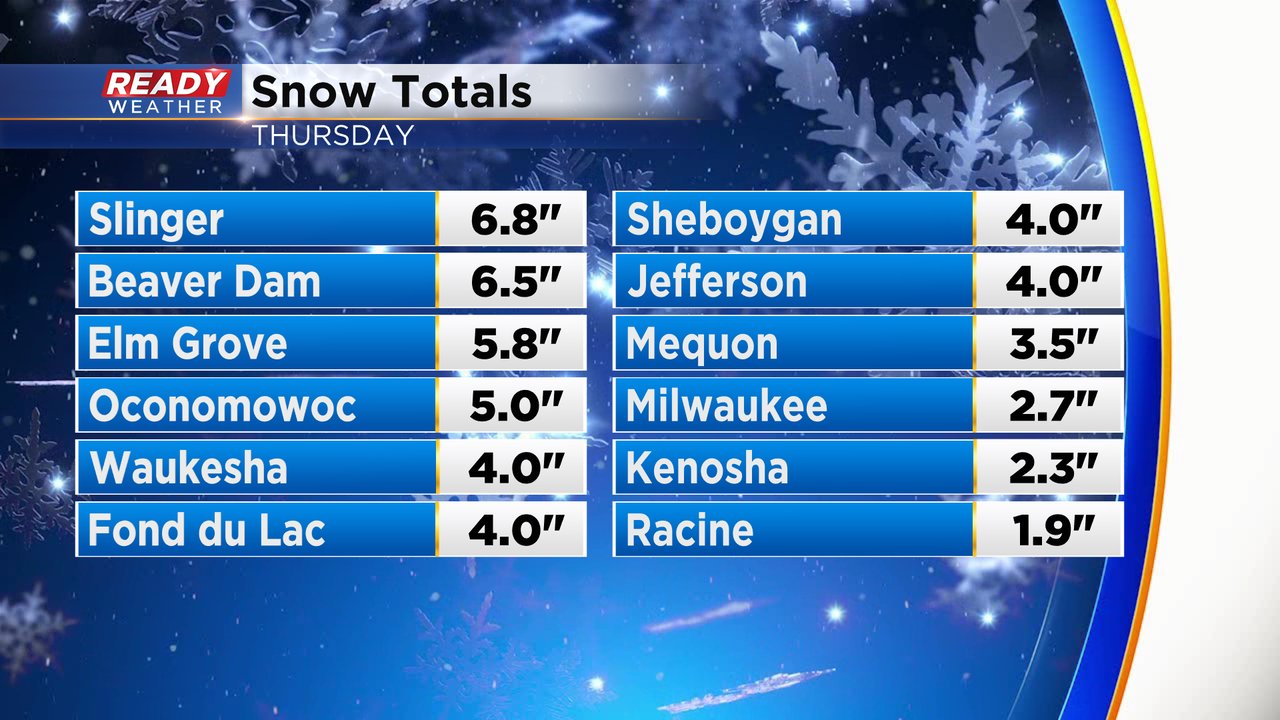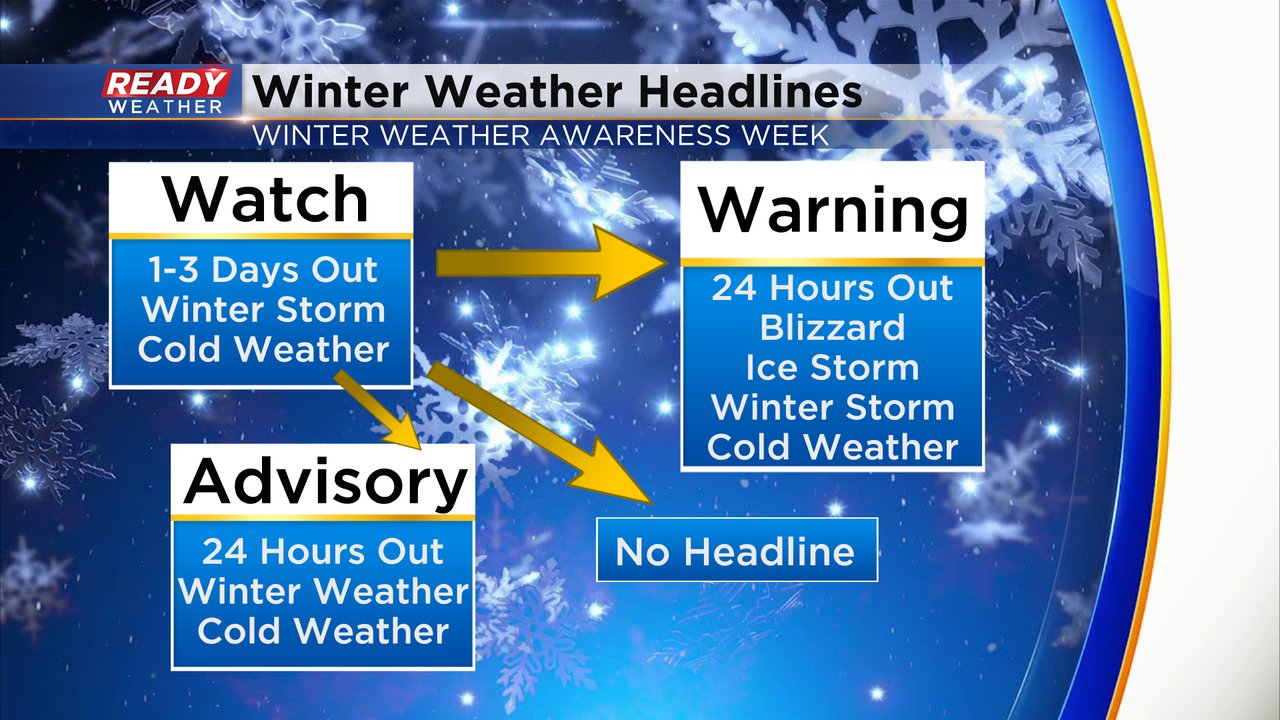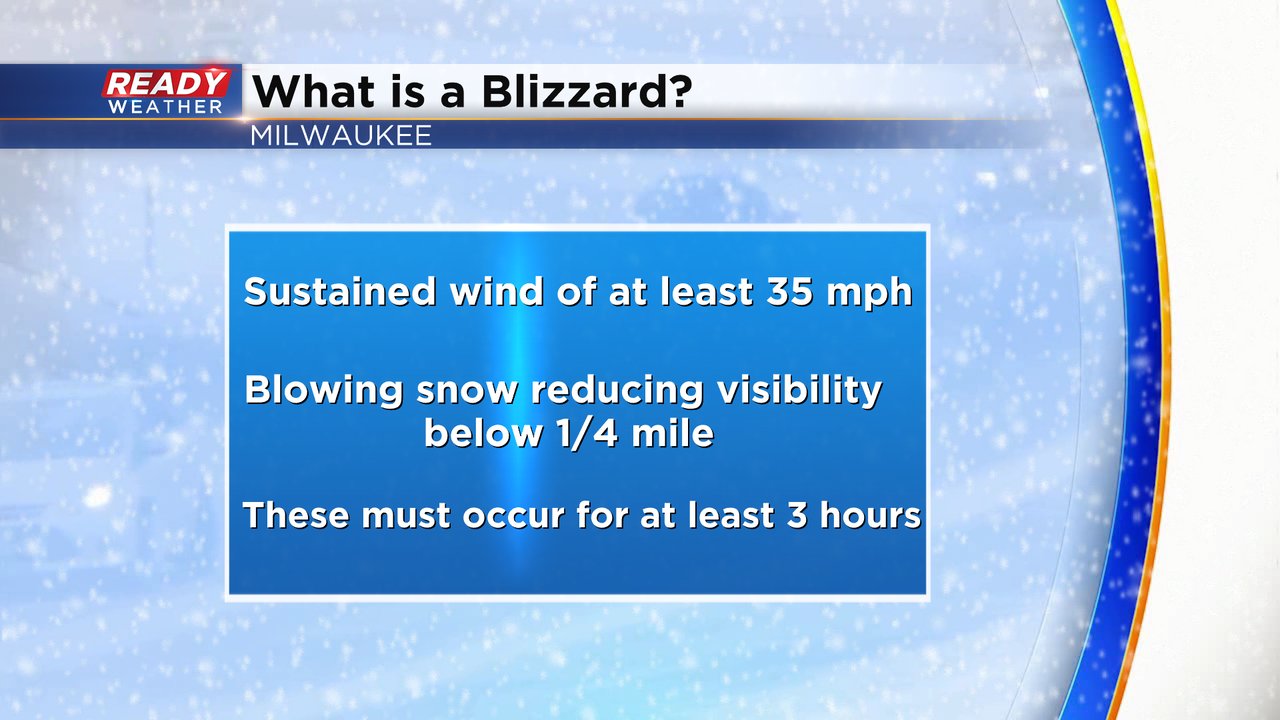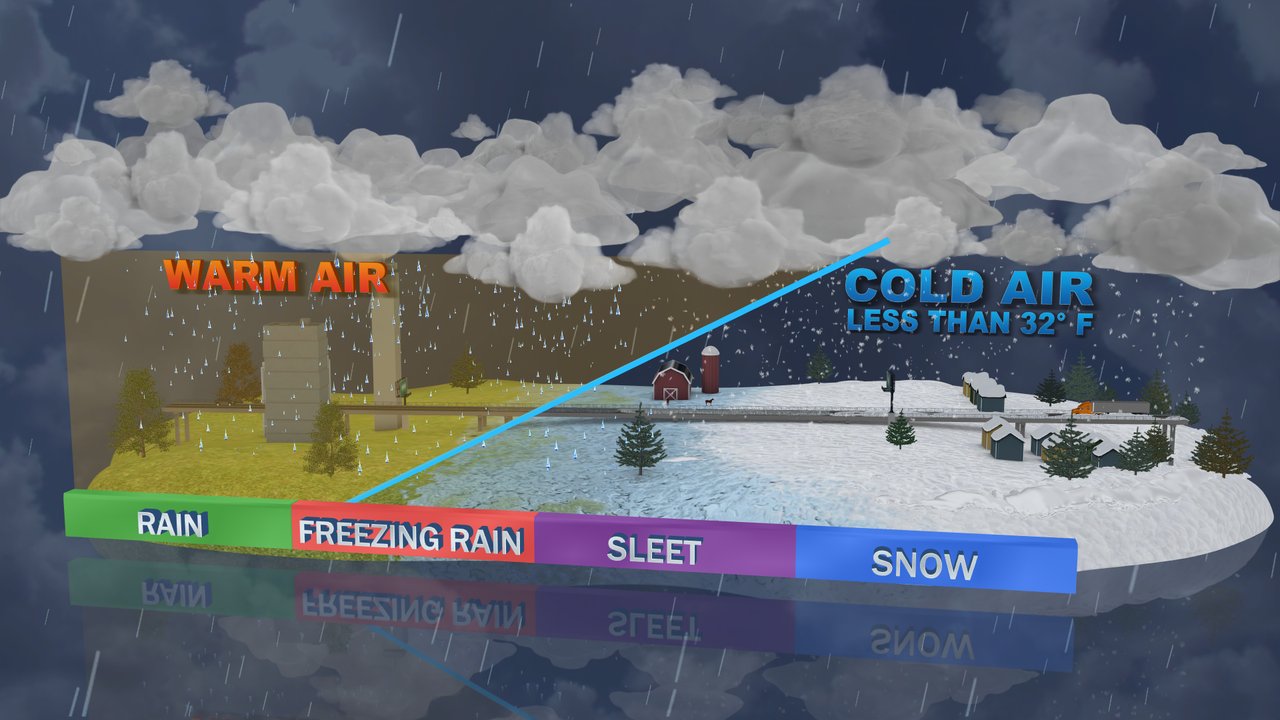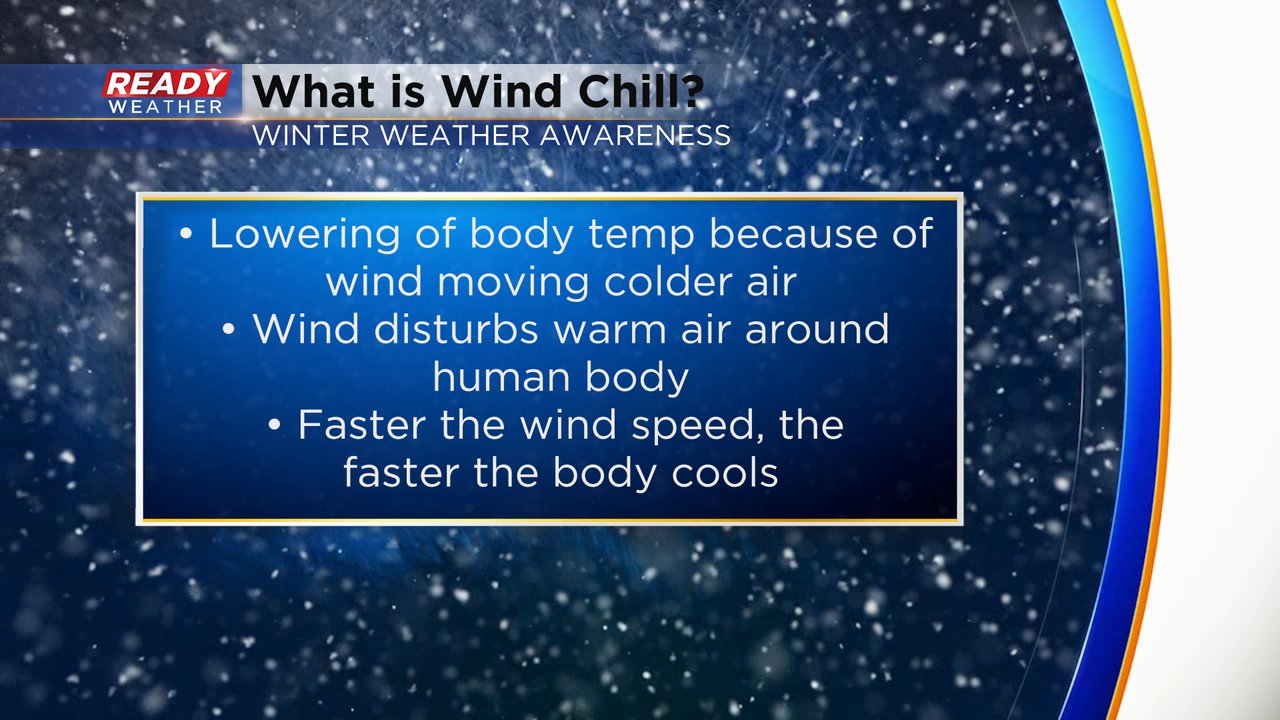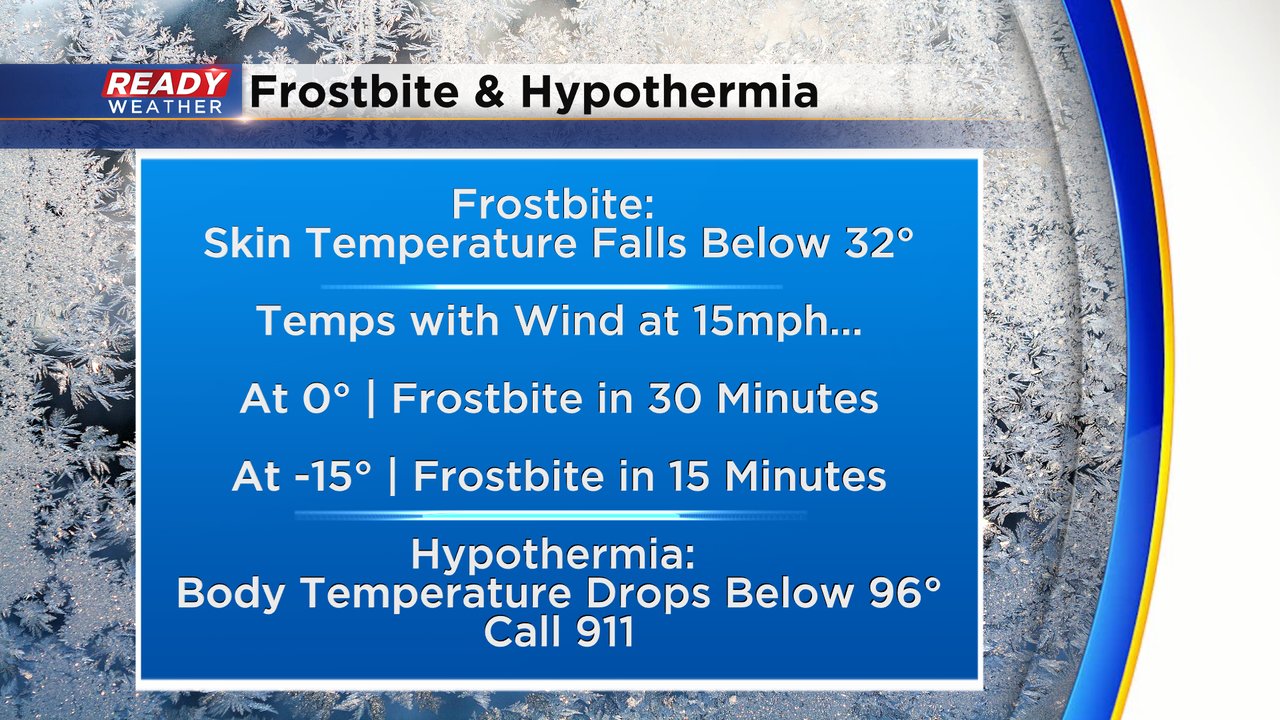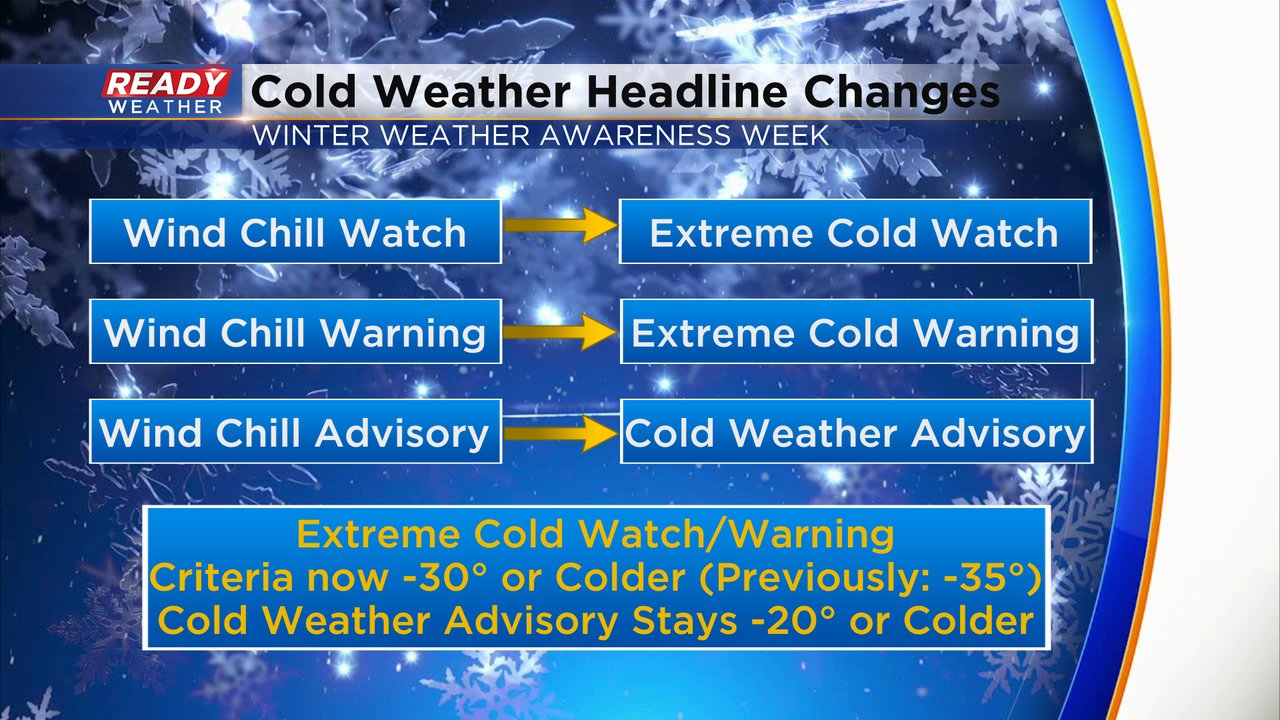Winter Weather Awareness Week wraps up after the first snowfall of the season
Winter Weather Awareness Week this year could not have been planned more perfect with our first taste of wintry weather and first snowfall rolling in on Thursday. It was a good helping of snow with some northern counties getting 4-7" of snowfall and southern areas seeing 1-4".
For that event we had a Winter Weather Advisory issued. Those advisories are issued for impactful but not necessarily dangerous weather. On the other hand, a Winter Storm Warning is issued for our more impactful and dangerous winter events where snow totals are typically expected over 6" for most.
If a winter storm, or cold air, is showing enough promise to impact southeast Wisconsin a few days before then sometimes a "Watch" can be issued. Those watches are issued about 1-3 days out then gets upgraded to either an Advisory or a Warning about 24 hours out. Occasionally a storm system could look good a few days out then doesn't look as promising and in those cases no additional headline would be issued.
A blizzard warning is also something we can see in winters in Wisconsin. We don't see many of them in southeast Wisconsin averaging one only every five years or so. A blizzard does have an exact definition of sustained wind or frequent gusts over 35 mph and a quarter mile of visibility both sustained for three straight hours.
Snow squall warnings are still relatively new but have been around for a few winters now and we typically see at least one issued every winter. They are issued for quick but intense bursts of snow that can quickly accumulate and drop visibility quickly leading to rapidly deteriorating road conditions. They are issued for a polygon area and last only 30-60 minutes.
When it comes to winter weather there are a variety of precipitation types we can see from snow to rain and everything in between. The different type of weather depends on temperatures in the low, mid and upper levels of the atmosphere. Snow happens when the temperature is below 32 degrees from top to bottom in the atmosphere. Rain happens when it's above 32 from top to bottom. For freezing rain to form most of the mid and upper levels are warm but then you get a layer of freezing air right at the surface that causes ice to form. Sleet happens when a layer of warm air at the top of the atmosphere melts an ice crystal but then colder air in the mid and low levels re-freezes the raindrop into an ice pellet.
Cold air is also a major concern during winter. Wind chill is when the body temperature drops because wind disturbs a bubble of warm air around the human body. The faster the wind, the faster the body cools.
Cold temperatures and cold wind chills can lead to frostbite and hypothermia. Frost bite can happen when the skin temperature drops below 32 degrees and can happen in as little as 15-30 minutes when temperatures and wind chills are below-zero. Hypothermia happens when the body temperature drops to 96 degrees. Symptoms of hypothermia include confusion, shivering, difficulty speaking, sleepiness and stuff muscles and 911 should be called. To avoid cold weather concerns use layers like thin synthetic materials to stay warm, avoid cotton socks (wool is better), protect your head and neck with a hat and scarf and stay hydrated and nourished.
One change you will see this year with our weather headlines has to do with cold weather headlines. No longer will we use the phrases, "wind chill watch", "wind chill warning" and "wind chill advisory". They will be replaced by "extreme cold watch", "extreme cold warning" and "cold weather advisory". The naming change is to be more inclusive of all cold weather, not just what we see with wind chill. There's alsoi a slight criteria change with the new extreme cold watch or warning now issued for wind chills colder than -30. The old criteria used to be colder than -35 so we may see extreme cold warnings issued a bit more frequently. There are no changes to a cold weather advisory which stays at wind chills or temps -20 or colder.
Download the CBS 58 Ready Weather app to see the full 10-day forecast to see if any bitter cold weather is in sight.















